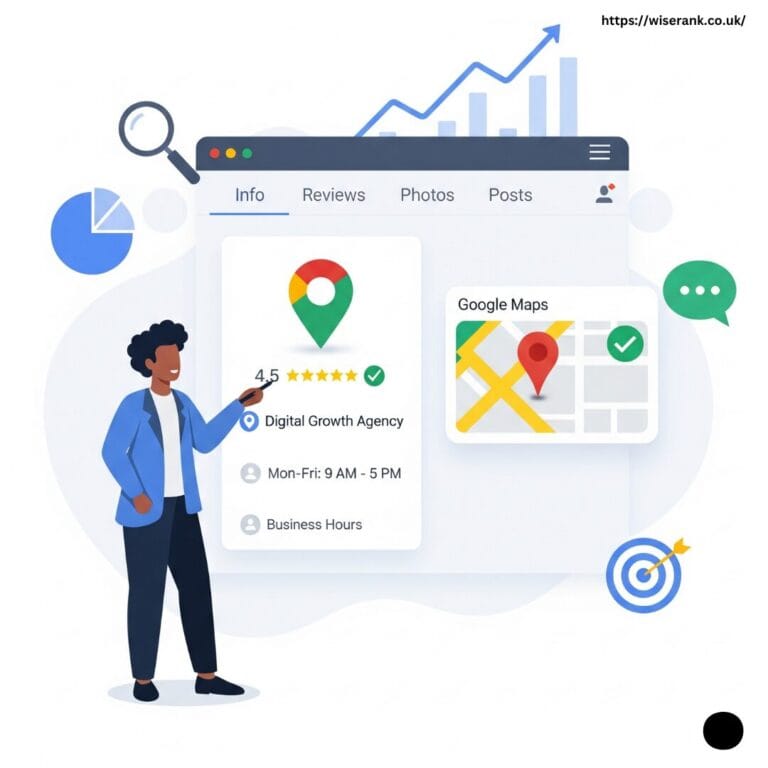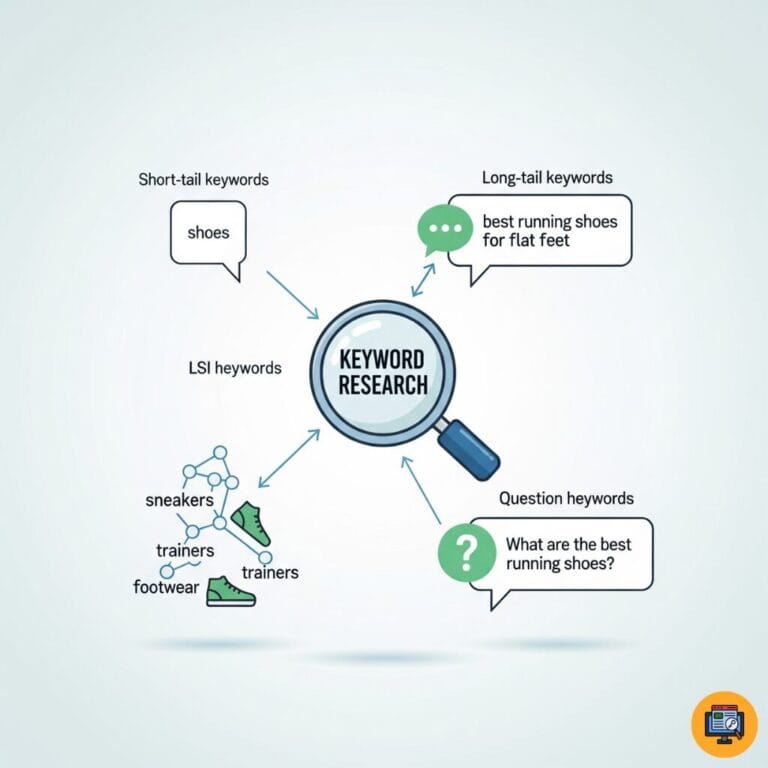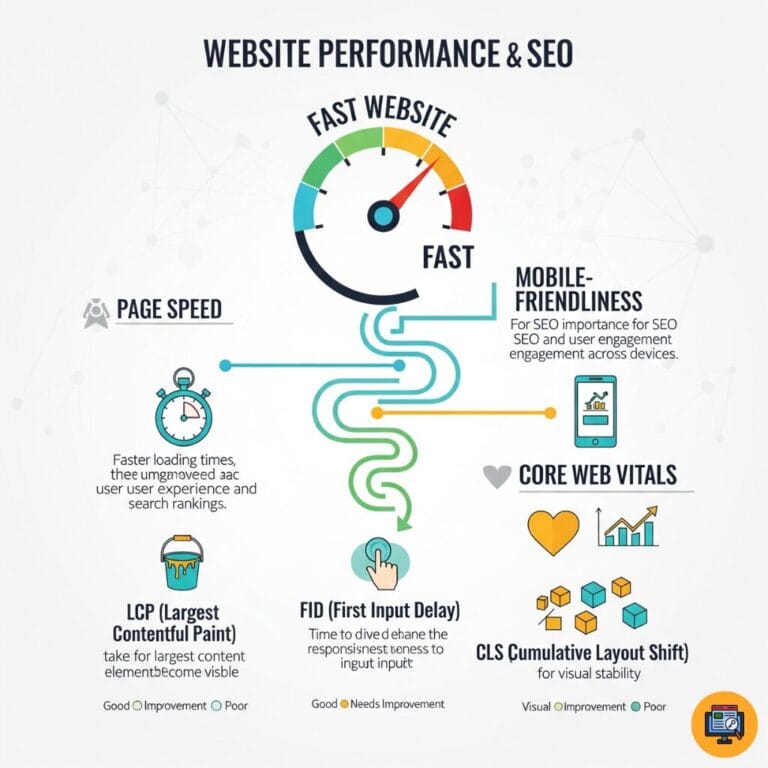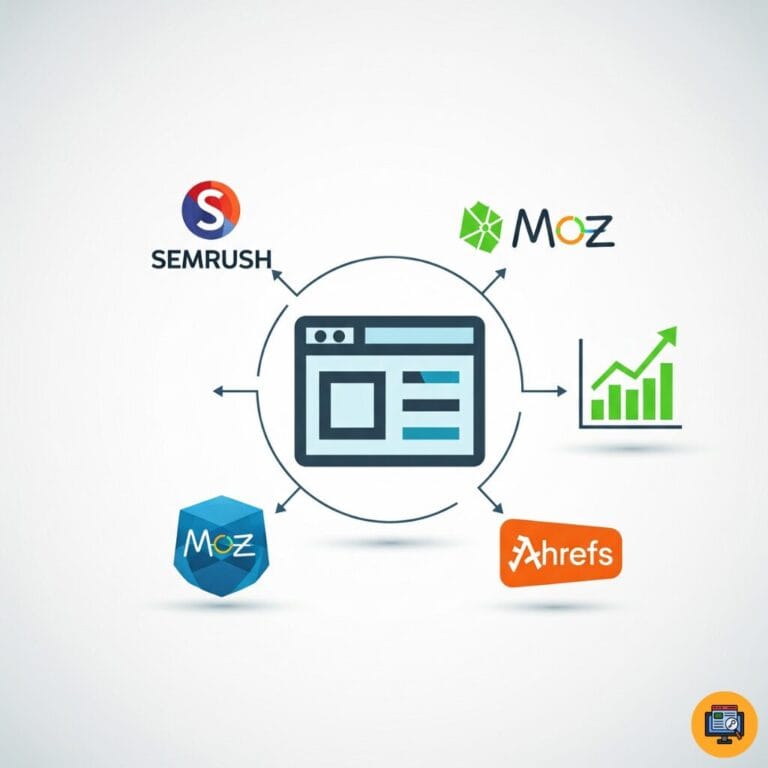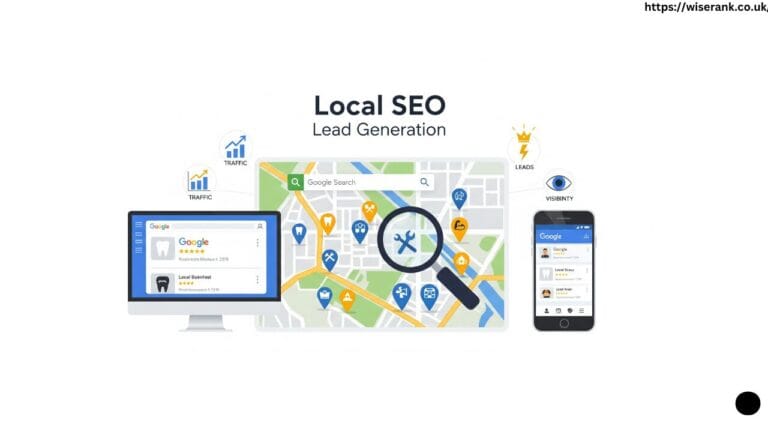What Are LSI Keywords Anyway?
LSI keywords, or Latent Semantic Indexing keywords, are terms and phrases related to your main topic. The concept suggests using words that commonly appear together in content about the same subject to help search engines understand context and meaning.
Many SEO professionals have used LSI keywords for years, believing that adding related terms and synonyms to content helps pages rank better. The idea is that these semantically related keywords signal comprehensive topic coverage to search engines like Google.
The Origin Story: Where LSI Keywords Came From
Latent Semantic Indexing is a mathematical technique developed in the 1980s for analyzing relationships between documents and terms. It was designed to improve information retrieval by understanding conceptual similarity rather than exact word matching.
The SEO industry adopted the term “LSI keywords” to describe related terms that should appear in optimized content. However, the actual LSI algorithm was never used by Google, creating a fundamental misunderstanding that persists today.
The Big Misconception About Google and LSI
Here is the truth that surprises many SEO professionals: Google does not use Latent Semantic Indexing for search rankings. Google’s John Mueller has stated directly that Google does not use LSI in their algorithm.
The confusion arose because SEO tools and educators needed a simple term to describe related keywords and semantic relevance. “LSI keywords” became shorthand for something Google does care about: contextual relevance and comprehensive topic coverage.
What Google Actually Uses Instead of LSI?
Google relies on sophisticated natural language processing, machine learning algorithms like RankBrain and BERT, and entity-based understanding to comprehend content meaning and relevance.

These modern technologies analyze context, user intent, and semantic relationships far more effectively than traditional LSI ever could. Google understands synonyms, related concepts, and how words relate to topics without needing the specific mathematical approach of Latent Semantic Indexing.
Natural Language Processing Powers Modern Search
Google’s natural language processing analyzes how words are used in context, understands sentence structure and meaning, recognizes entities and their relationships, and interprets user queries beyond exact keyword matching.
RankBrain and Machine Learning
RankBrain uses machine learning to understand query intent, match searches to relevant content even without exact keyword matches, and improve results based on user satisfaction signals from billions of searches.
BERT and Contextual Understanding
BERT analyzes the full context of words by looking at words that come before and after them, understands nuances in language including prepositions and qualifiers, and processes conversational queries more accurately than previous algorithms.
Entity-Based Search Evolution
Google identifies and understands entities like people, places, products, and concepts, maps relationships between entities in the Knowledge Graph, and matches content to queries based on entity relevance rather than just keyword presence.
Do Related Keywords Still Matter for SEO?
Yes, related keywords absolutely matter for SEO in 2025, but not because of LSI. They matter because comprehensive content naturally includes variations, synonyms, and related terms when thoroughly covering topics.
Why Keyword Variations Improve Rankings?
Content with natural keyword variations ranks for more search queries, satisfies diverse user search patterns, demonstrates thorough topic knowledge, and creates better user experience through natural language.
The Difference Between LSI and Semantic SEO
LSI keywords is an outdated term for a technology Google never used, while semantic SEO correctly describes optimizing for meaning, context, and relationships using strategies aligned with how modern search actually works.
Topic Coverage vs Keyword Stuffing
Comprehensive topic coverage means addressing all important aspects of a subject naturally, while keyword stuffing forces repetitive exact keywords that harm readability and trigger spam filters.
How to Find Semantically Related Keywords in 2025
Finding related keywords for modern SEO requires understanding what users actually search for and what topics naturally connect to your main subject. Several free and paid methods help you discover semantically related terms that strengthen your content’s topical relevance and search visibility.
Using Google’s Built-In Research Tools
Google provides free tools showing related searches at the bottom of search results pages, auto-complete suggestions when typing queries, “People also ask” boxes showing related questions, and related queries in Google Search Console performance reports.
Leveraging SEO Tools for Keyword Research
Professional SEO tools like Semrush, Ahrefs, and Moz identify keyword variations and related terms, while specialized tools like Surfer SEO, Clearscope, and MarketMuse analyze top-ranking content to suggest semantically related keywords.
Analyzing Competitor Content
Study top-ranking pages for your target keywords, note terms and phrases they include beyond exact keyword matches, identify topics and subtopics they cover comprehensively, and find gaps where you can provide additional value.
Mining Question-Based Keywords
Use Answer the Public, AlsoAsked, and similar tools to discover questions users ask about your topics, then create content addressing these questions using natural variations of your main keywords.
How to Use Related Keywords Naturally
The key to using related keywords effectively is integrating them naturally where they add value rather than forcing them into content awkwardly for SEO purposes.
Natural keyword usage improves both user experience and search engine understanding without triggering over-optimization penalties.
Writing for Humans First
Create content that genuinely helps readers solve problems or answer questions, use related terms where they naturally fit the context, avoid forcing keywords that disrupt reading flow, and prioritize clarity and helpfulness over keyword density.
Strategic Placement Without Stuffing
Include primary keywords in titles, headings, and early paragraphs, use variations and related terms throughout body content naturally, incorporate synonyms to avoid repetitive phrasing, and let comprehensive topic coverage drive keyword inclusion.
Balancing Exact Match and Variations
Use exact target keywords in important locations like title tags and H1 headings, employ variations and related terms in subheadings and body text, and mix exact matches with natural synonyms for readable content.
Contextual Integration Techniques
Introduce related keywords when explaining concepts, use variations in examples and case studies, include synonyms in lists and bullet points, and incorporate question-based keywords when answering common queries.
Common LSI Keyword Myths Debunked
Several persistent myths about LSI keywords mislead content creators and waste optimization efforts on techniques that do not actually help rankings. Understanding what is true versus what is marketing hype helps you focus on strategies that actually work.
Myth: Google Uses LSI Technology
The reality is Google has never used the Latent Semantic Indexing algorithm despite the persistence of this myth in SEO discussions and tool marketing.
Myth: LSI Keyword Tools Are Essential
Many “LSI keyword tools” simply show related searches and synonyms, not actual LSI analysis, and you can find the same information using free Google tools without special software.
Myth: You Need Specific Keyword Density
No magic percentage of related keywords guarantees rankings, and natural comprehensive content varies in density based on topic complexity without following rigid formulas.
Myth: More Related Keywords Equal Better Rankings
Quality trumps quantity, and forcing too many related keywords creates unnatural content that users and search engines both dislike more than focused, helpful writing.
LSI Keywords vs Semantic Keywords: Understanding the Difference
Many people use the terms “LSI keywords” and “semantic keywords” interchangeably, but they represent fundamentally different concepts in SEO. Understanding this distinction helps you focus on strategies that actually align with how modern search engines work.
Key Differences Between LSI and Semantic Approaches
The main distinctions that matter for your SEO strategy include:
- LSI refers to a specific 1980s mathematical algorithm for document analysis
- Semantic SEO describes modern context-based search understanding
- LSI keywords is a marketing term not based on Google’s technology
- Semantic keywords reflect actual relationships between topics and concepts
- Google uses natural language processing instead of LSI technology
- Semantic optimization aligns with RankBrain, BERT, and entity-based search
- Modern semantic SEO focuses on intent and meaning over keyword formulas
What Actually Works: Modern Semantic SEO
Modern semantic SEO focuses on understanding user intent, covering topics comprehensively, and creating content that search engines recognize as authoritative and relevant. These strategies align with how Google actually works rather than relying on outdated concepts like LSI.
Comprehensive Topic Coverage
Address all important aspects of your subject including main topics and relevant subtopics, answer common questions users have, provide examples and practical applications, and link related concepts logically.
Creating Topic Clusters
Build pillar pages covering broad topics comprehensively, develop cluster content exploring specific subtopics in depth, connect related content through strategic internal linking, and demonstrate topical authority across subject areas.
Optimizing for Search Intent
Understand what users actually want when searching, match content format to query type like informational, navigational, or transactional, provide direct answers to user questions, and satisfy intent completely to reduce pogo-sticking.

Entity Optimization Strategies
Mention relevant entities like people, places, products, and concepts, show relationships between entities and your main topics, use schema markup to clarify entity information, and build authority around specific entities in your niche.
Strengthen Topical Relevance with Complete On-Page SEO
While LSI keywords help Google better understand the context of your content, they’re only one part of a broader on-page SEO strategy. On-page SEO involves optimizing every on-page element including title tags, meta descriptions, keyword placement, headings, and internal links to improve both search visibility and user engagement. By combining well-researched LSI terms with a complete on-page optimization approach, you ensure that your content is semantically rich, contextually accurate, and perfectly aligned with user intent. This balance helps your pages rank higher, attract more qualified traffic, and build stronger authority in your niche.
Tools That Actually Help With Semantic SEO
Forget tools claiming to provide “LSI keywords” and focus on those helping with genuine semantic optimization and comprehensive topic coverage. Modern content optimization tools analyze top-ranking content and suggest improvements based on what actually works in current search algorithms.
Content Optimization Platforms
Surfer SEO analyzes top-ranking pages and suggests related topics to cover, Clearscope provides content briefs showing important terms and concepts, MarketMuse identifies content gaps and optimization opportunities, and Frase helps research questions and topics to address.
Traditional Keyword Research Tools
Semrush offers keyword variations, questions, and related terms alongside search volume data, Ahrefs shows keywords top-ranking pages rank for, Moz provides related keywords and SERP analysis, and Google Keyword Planner suggests related search terms.
Free Google Resources
Google Search Console shows queries driving traffic and impressions, Google Trends reveals related topics and rising queries, Auto-complete provides search suggestions based on real user queries, and Related Searches shows terms Google considers relevant.
Measuring the Impact of Semantic Optimization
Track specific metrics to see whether semantic optimization and comprehensive topic coverage improve your search performance and user engagement.
Rankings for Related Keywords
Monitor whether you rank for more keyword variations after optimization, track long-tail query rankings that indicate comprehensive coverage, watch for featured snippet opportunities from thorough topic coverage, and measure overall search visibility across topic clusters.
Organic Traffic Growth
Track total organic traffic increases over time, analyze traffic from related search queries, monitor engagement from new keyword rankings, and measure quality traffic that converts or engages.
User Engagement Signals
Watch time on page and bounce rate improvements, track pages per session increases, monitor scroll depth showing users consume more content, and measure conversion rates from organic traffic.
Real-World Examples of Semantic SEO Success
Websites focusing on comprehensive topic coverage and natural language optimization consistently outperform those targeting narrow exact-match keywords alone.
These examples show semantic SEO principles in action rather than outdated LSI tactics.
Content That Covers Topics Thoroughly
Health and medical sites ranking well address conditions, symptoms, treatments, prevention, and related topics comprehensively rather than focusing on single exact keywords repeatedly.
Natural Language Wins Over Keyword Density
Travel blogs using conversational language with natural variations rank better than those awkwardly forcing exact destination names throughout content.
Topic Authority Beats Single Keywords
Technology sites building comprehensive resources covering entire product categories outrank pages optimized for single product keywords without broader context.
Common Mistakes to Avoid
Many content creators make preventable errors when trying to optimize for semantic relevance and related keywords.
Avoiding these mistakes saves time and prevents strategies that actually hurt rather than help your rankings.
Over-Relying on LSI Keyword Tools
Do not waste money on tools promising magical LSI keyword lists that guarantee rankings, and avoid stuffing content with every suggested related term regardless of relevance.
Forcing Unnatural Keyword Placement
Never sacrifice readability to include more related keywords, and avoid awkward phrasing just to fit in variations or synonyms.
Ignoring Search Intent
Do not create content targeting keywords without understanding what users actually want, and avoid keyword-focused content that fails to satisfy user needs comprehensively.
Neglecting Content Quality
Never let keyword optimization overshadow creating genuinely helpful content, and do not publish thin content packed with keywords instead of valuable information.
The Future of Semantic Search and SEO
Search technology continues evolving toward better understanding of meaning, context, and user needs beyond simple keyword matching.
Understanding these trends helps you prepare content strategies that remain effective as algorithms advance.
AI and Natural Language Understanding
Google’s AI systems grow increasingly sophisticated at understanding natural language, context, and intent, making keyword manipulation less effective while rewarding genuinely helpful comprehensive content.
Voice Search and Conversational Queries
Voice search increases conversational long-tail queries that require natural language optimization rather than traditional keyword targeting focused on short exact-match phrases.
Entity-Based Search Dominance
Search engines increasingly organize information around entities and their relationships rather than keywords, requiring content strategies focused on topical authority and entity optimization.
Your Semantic SEO Action Plan
Stop worrying about LSI keywords as a specific technique and focus instead on creating comprehensive, naturally written content that thoroughly covers topics.
Use related keywords where they naturally fit, but prioritize user value and comprehensive topic coverage over hitting arbitrary keyword counts or densities.
Research your topics thoroughly using Google’s free tools and professional keyword research platforms to understand what questions users ask and what subtopics connect to your main subjects. Create content addressing these topics comprehensively using natural language that reads well and genuinely helps your audience.
Remember that modern SEO success comes from understanding user intent, demonstrating topical expertise, and creating the most helpful content for your target audience. Related keywords matter because they signal comprehensive coverage, not because of any outdated LSI algorithm that Google never used in the first place.

